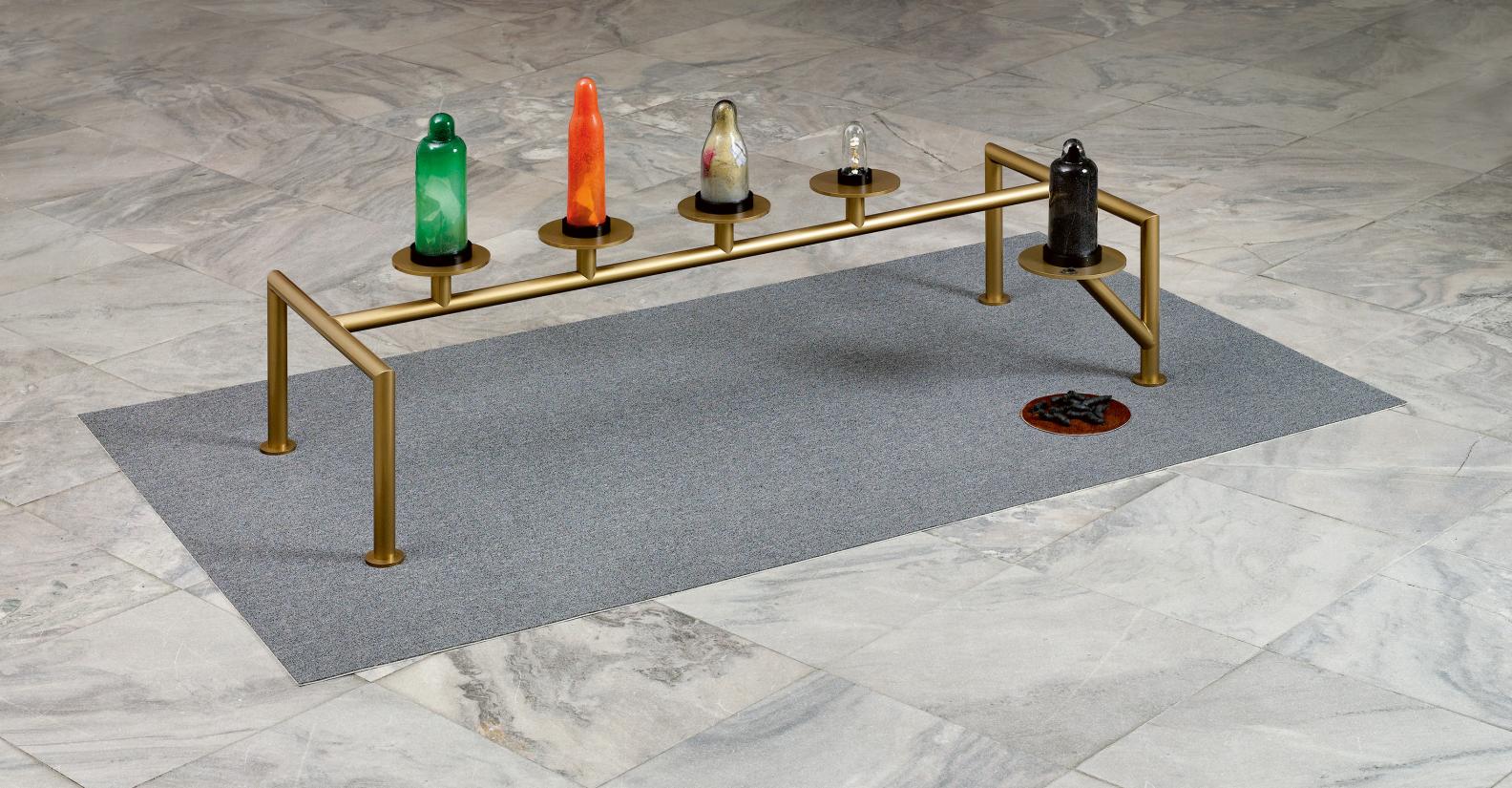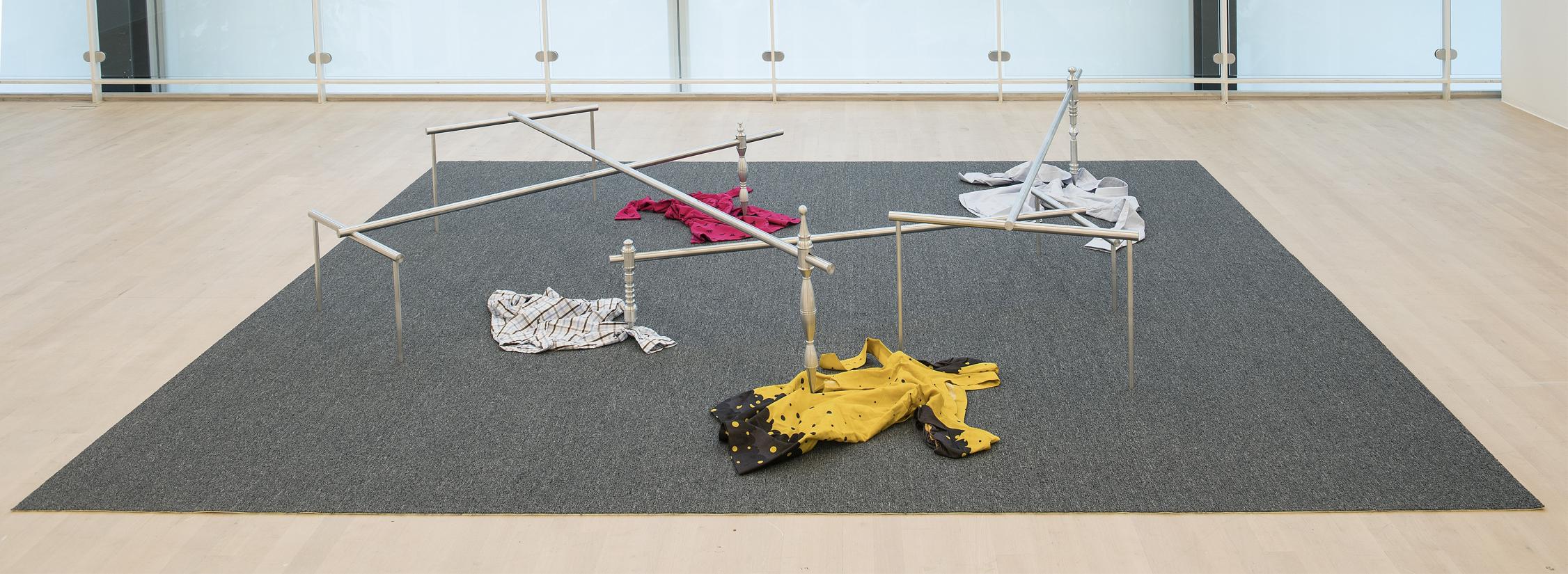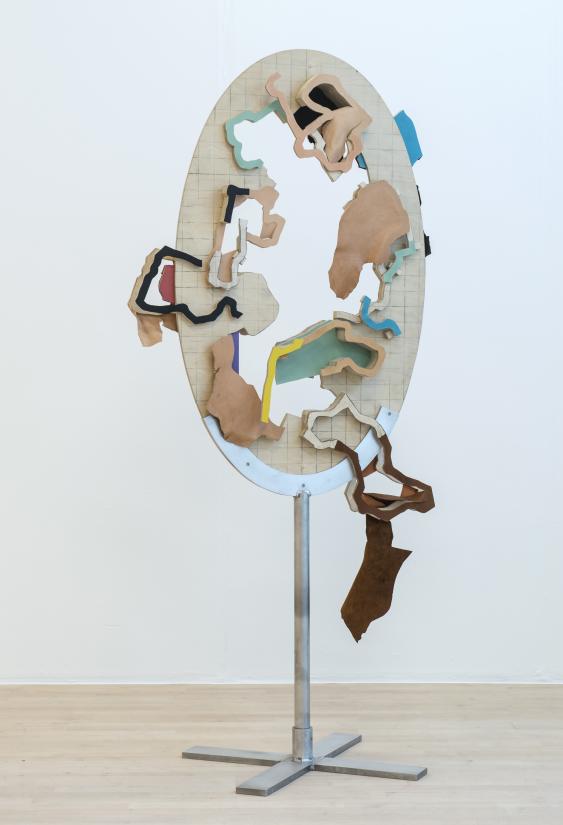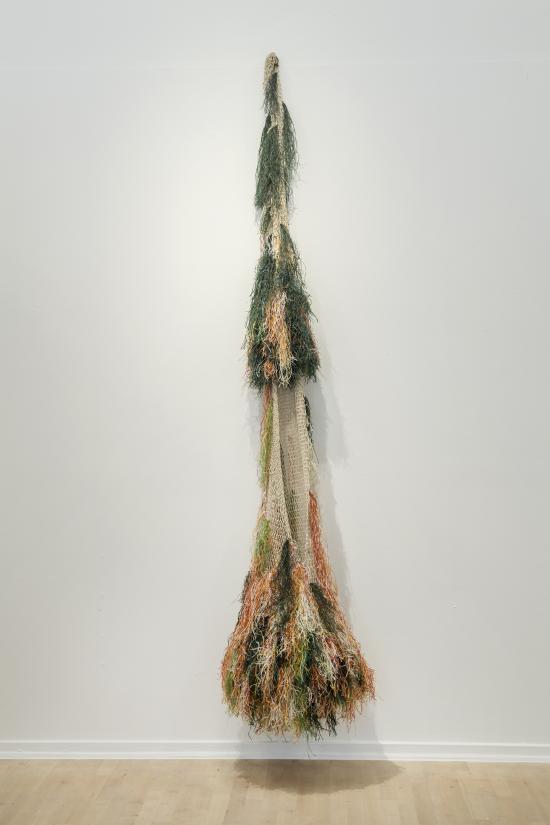In the winter of 2016–17, Esbjerg Art Museum held the exhibition BANG, presenting the museum’s unique collection of Thomas Bang’s works and putting it into perspective by juxtaposing it with more recent installations. It is a collection of these works, Syv forsøg på at skabe passende apparatur til almindelige familier (forsøg nr. 4 og 5) (Seven attempts at creating appropriate devices for ordinary families (attempts nos. 4 and 5)) and Double, and an older work, One Bag Hang from 1968, that are now being added to the museum’s collection.
All three works examine the mutability and processual character of our surroundings. They stimulate the beholder’s urge to make meaning and see causal links, and they create spaces that are at once familiar and alien.
An unparalleled collection
Esbjerg Art Museum helped introduce Thomas Bang to a Danish audience in 1995. At the time, the artist had spent most of his life in the United States and was now to be integrated into the Danish art scene. Since then, Esbjerg Art Museum has established the largest museum collection of Thomas Bang’s works, to which the current donation is a further contribution.
‘That Esbjerg Art Museum thus consolidates its already impressive collection is nothing short of amazing. Esbjerg has cemented its position as a centre for this internationally acknowledged and important artist’s work. That the years-long intense focus on Thomas Bang and his practice are now being noticed and recognized by the New Carlsberg Foundation is a great satisfaction to us, and it makes us proud,’ says Museum Director Inge Merete Kjeldgaard.
Esbjerg Art Museum’s unparalleled and representative Bang collection spans the time from the 1960s until the present day.
Complex constructions
Since the 1960s, Thomas Bang has been creating sculptural objects and installations that defy art history categorization. He takes an interest in the relationship between work and beholder and often explores common human conditions.
Bang works with recognizable objects in several of his works, combining them into constructions that break with tradition, but are nonetheless characterized by high-precision craftsmanship. Often raising questions rather than offering answers, aiming for complexity rather than simplification, his works require a heightened effort from their audience.






